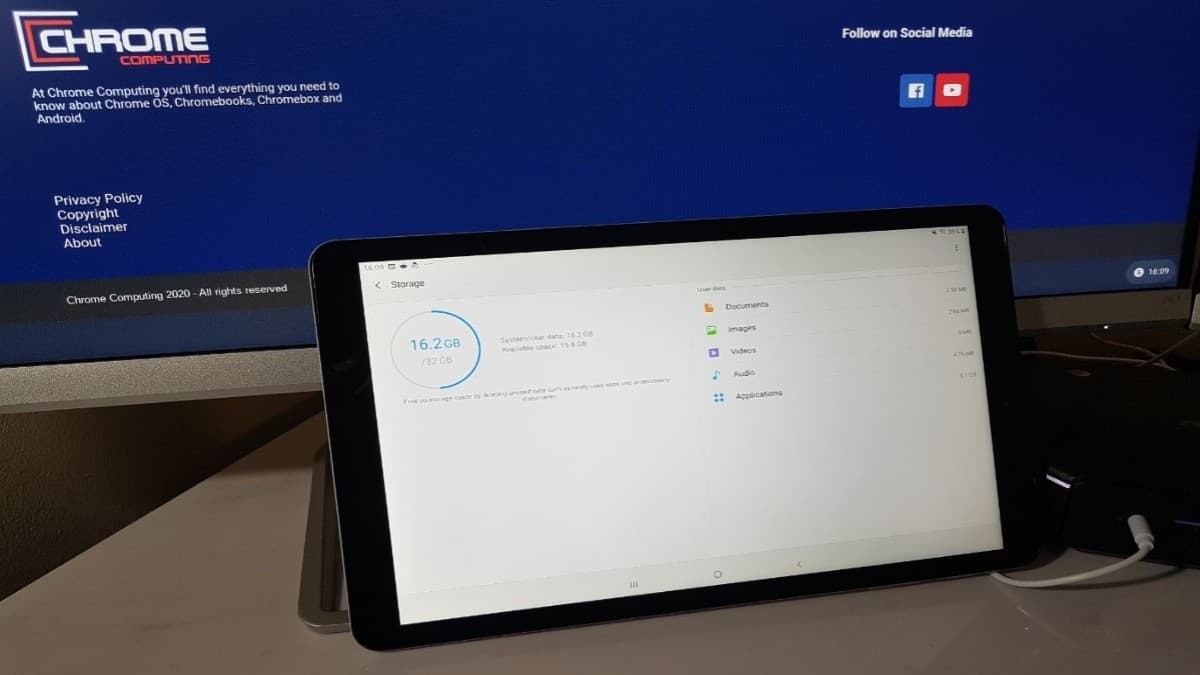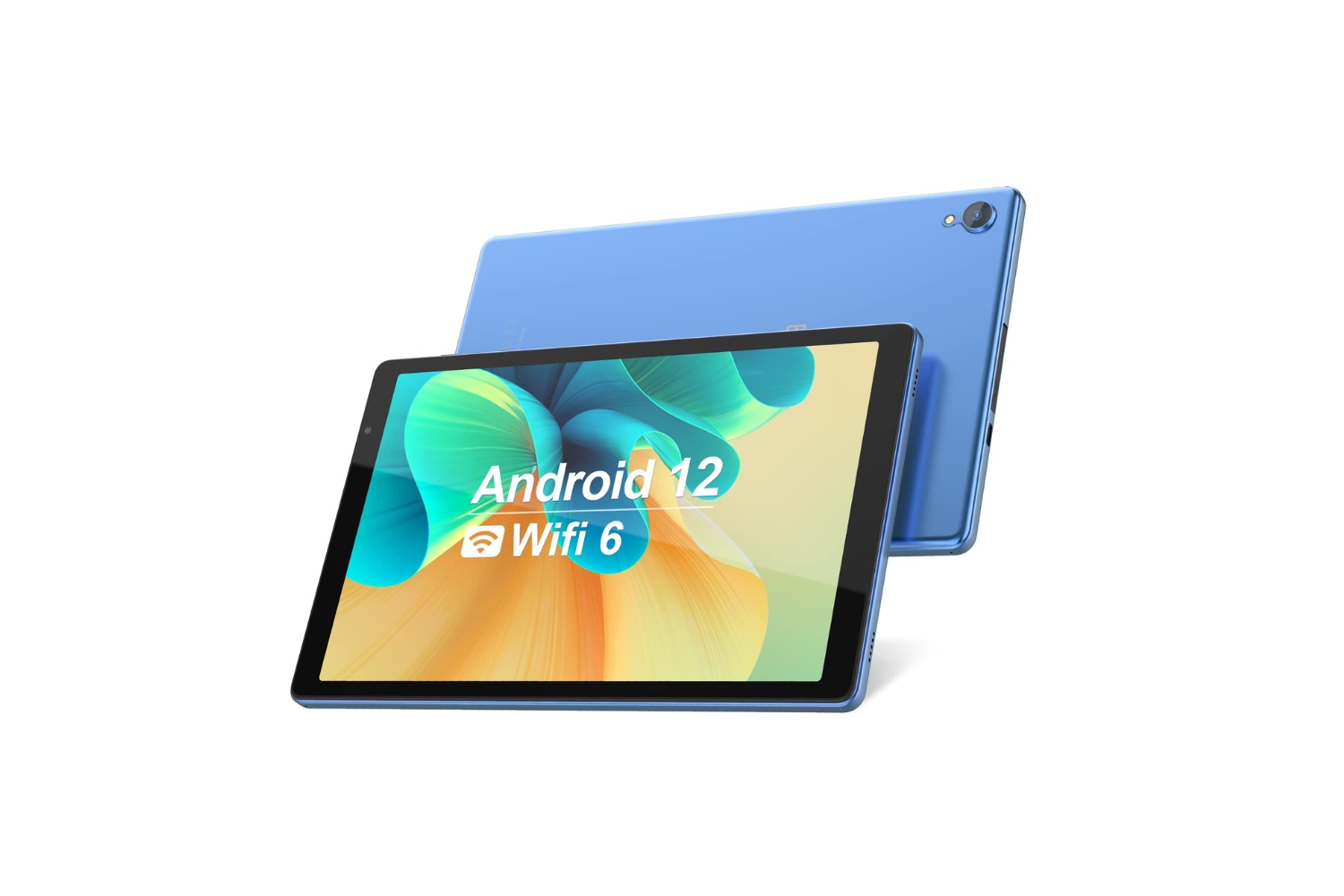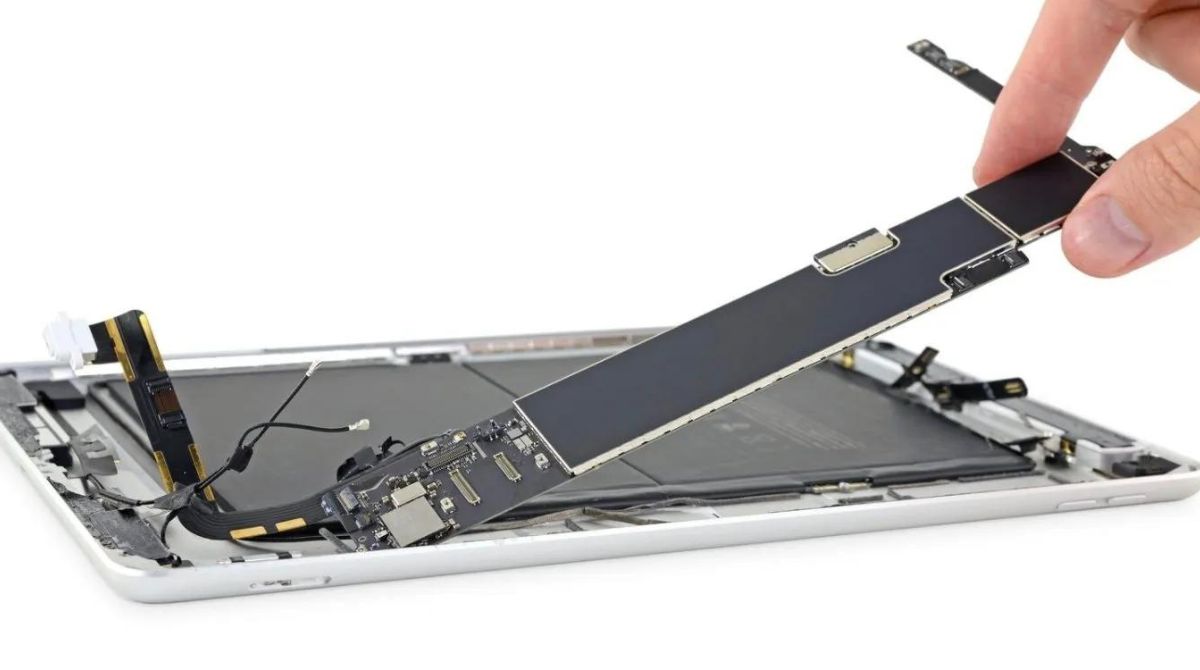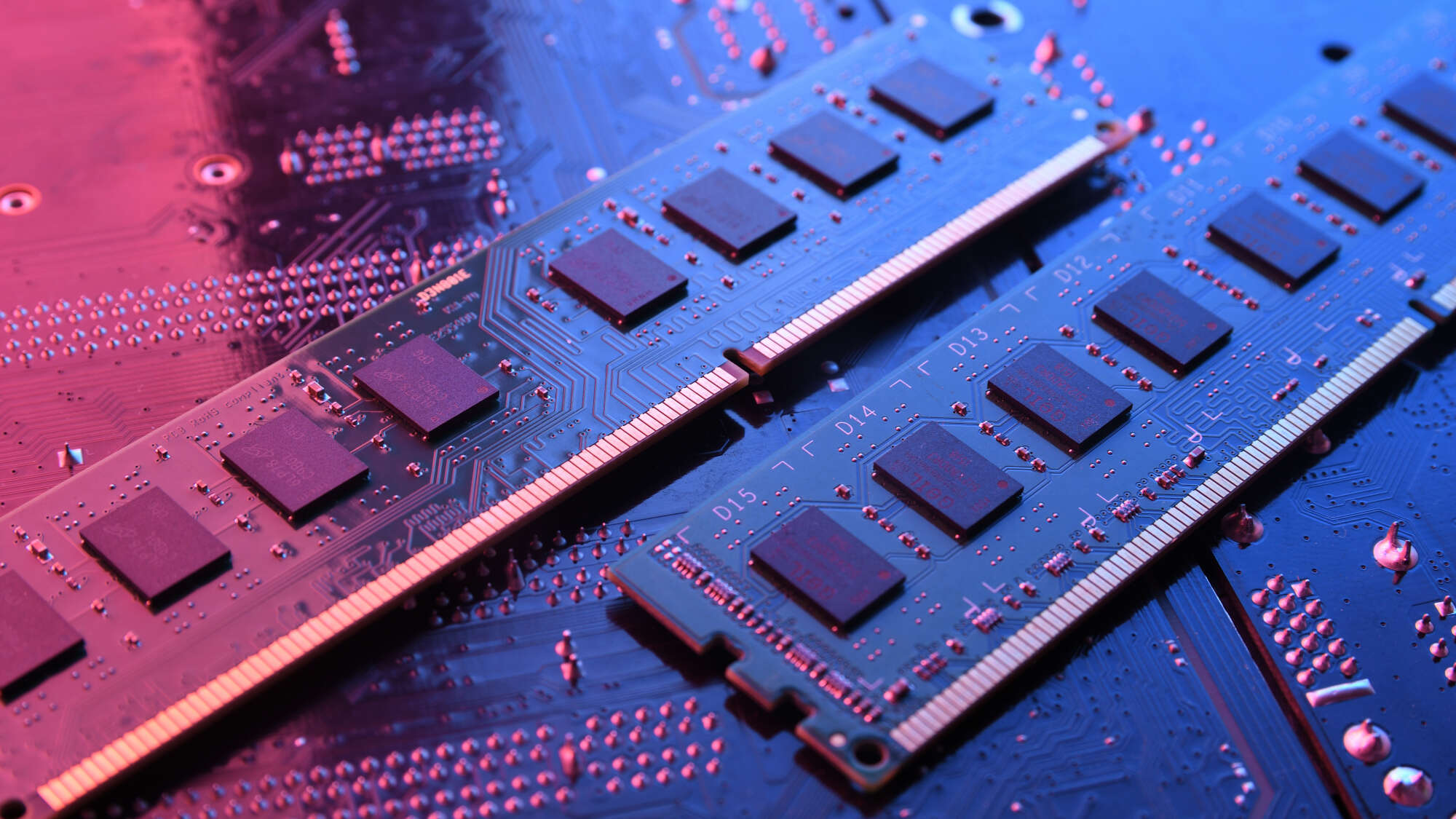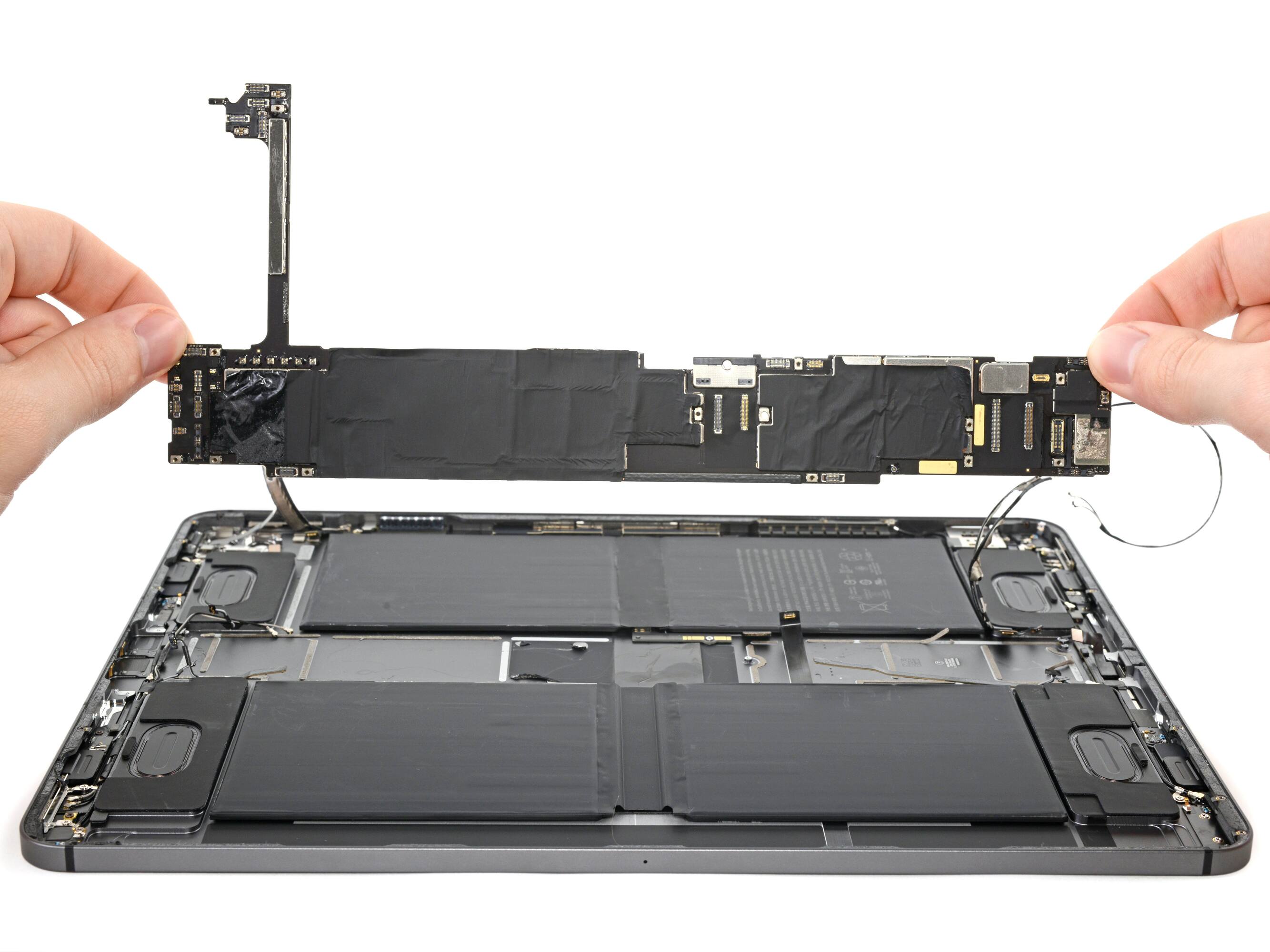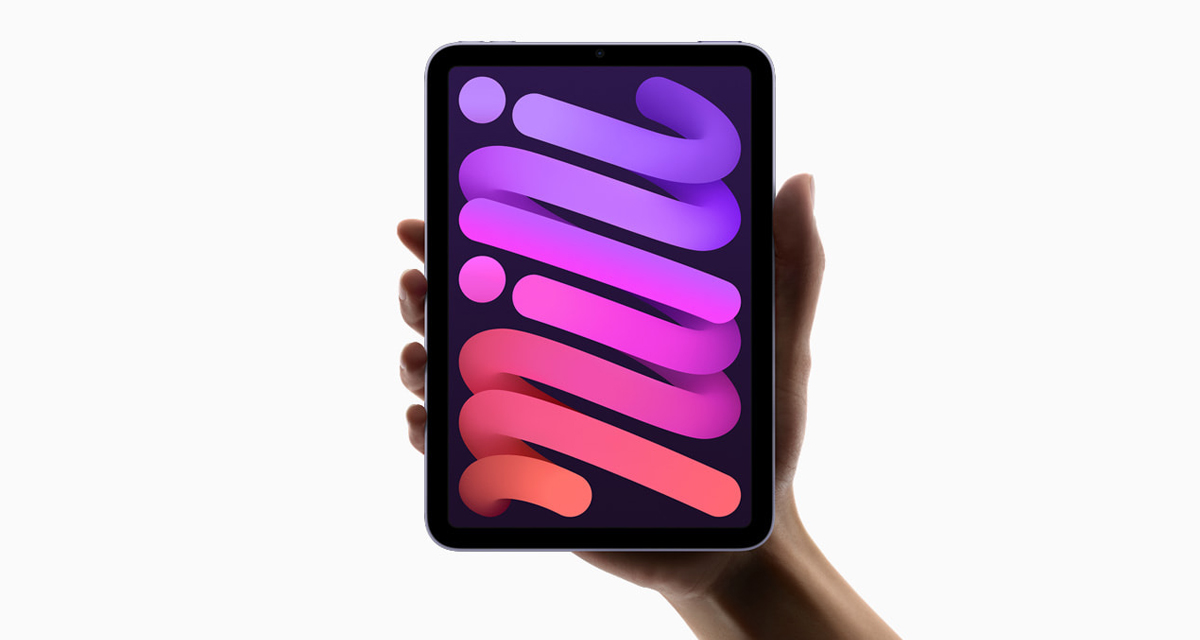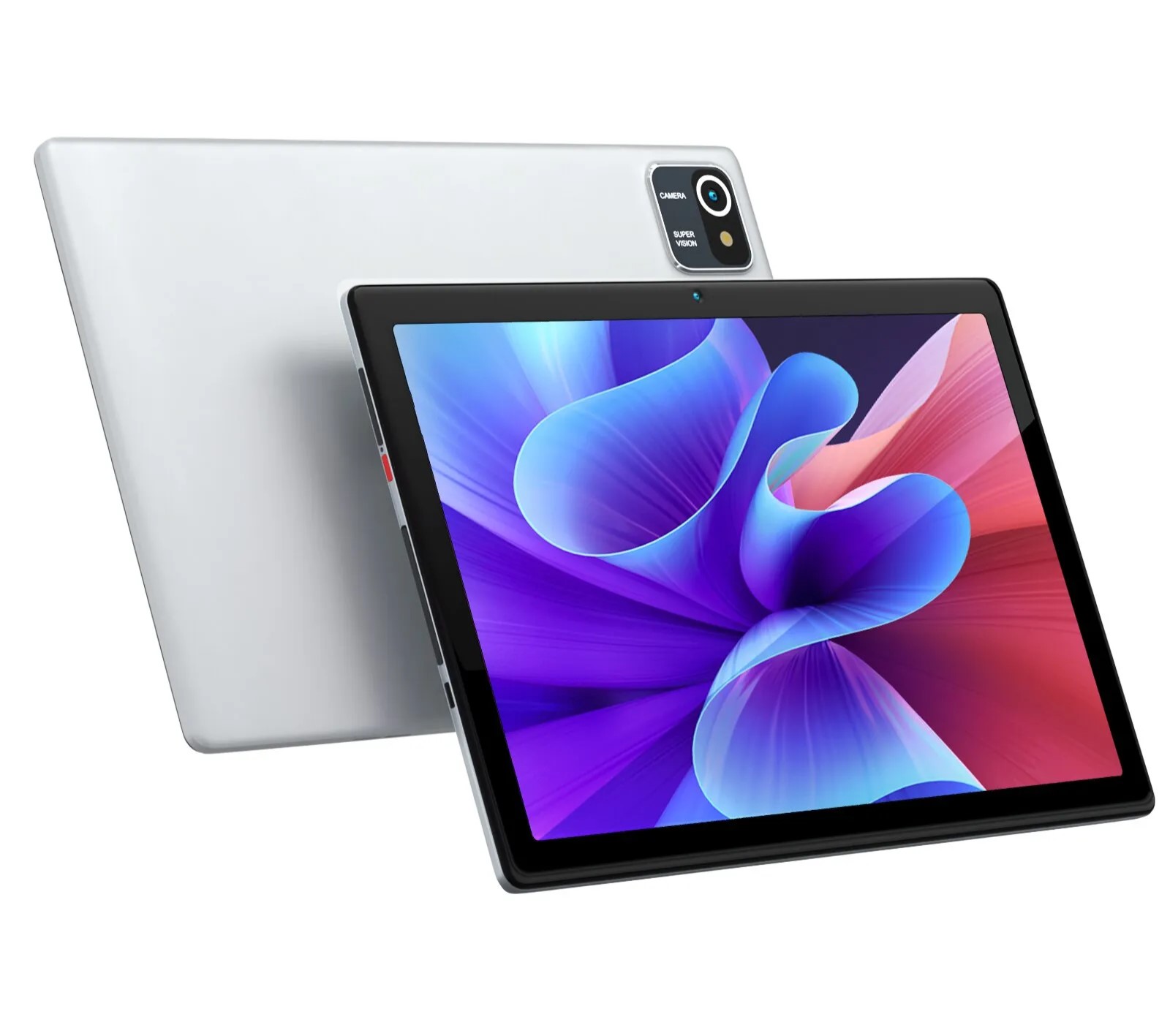Introduction
Welcome to the world of tablets, where portability and convenience meet technology and entertainment. Whether you use your tablet for browsing the web, streaming videos, playing games, or even for productivity tasks, you want it to perform smoothly and efficiently. And that’s where RAM comes into play.
RAM, or Random Access Memory, is an essential component of a tablet’s hardware. It acts as a temporary storage space for data that the device needs to access quickly. In simpler terms, it’s like the tablet’s short-term memory that allows it to multitask and run applications smoothly.
But why does RAM matter? Well, the amount of RAM your tablet has can significantly impact its performance. Insufficient RAM can lead to slow load times, frequent app crashes, and overall sluggishness. On the other hand, having ample RAM can ensure smooth multitasking, seamless app switching, and faster overall performance.
In this article, we will take a closer look at the role of RAM in tablet performance. We will explore the RAM requirements for different tasks and help you determine how much RAM your tablet needs. Additionally, we will discuss how to check the amount of RAM on your tablet and provide tips for optimizing RAM usage. So, let’s dive in and demystify the world of tablet RAM!
Why does RAM matter?
RAM is a crucial component of a tablet because it directly impacts its performance and usability. When you open an application or perform a task on your tablet, the operating system loads the necessary data from the storage into the RAM for quick access. The more RAM your tablet has, the more data it can hold in its short-term memory, resulting in smoother and faster operations.
One of the main reasons RAM matters is its role in multitasking. With higher RAM capacity, your tablet can handle multiple applications running simultaneously without experiencing a significant drop in performance. For example, you can easily switch between a web browser, messaging app, and email client without any noticeable lag or delay. On the other hand, tablets with limited RAM may struggle to juggle multiple tasks, leading to slowdowns or even crashes of running applications.
RAM also impacts the speed at which your tablet can load and run apps. When you launch an app, it needs to load data into RAM so that it can be accessed quickly during use. If your tablet has insufficient RAM, it may take longer to load apps, resulting in frustrating delays. Additionally, apps that require more memory, such as graphic-intensive games or video editing software, may perform poorly or be unable to run at all on tablets with low RAM capacity.
Furthermore, RAM plays a significant role in web browsing. Every time you visit a website, your tablet stores the webpage data in its RAM for faster access. With more RAM, your tablet can store a larger amount of browsing data, resulting in smoother scrolling and faster page loading. Conversely, a tablet with limited RAM may struggle to handle complex webpages, resulting in slow browsing speeds and frequent page reloads.
In summary, RAM is essential for smooth multitasking, fast app loading, and efficient web browsing on your tablet. Investing in a tablet with ample RAM ensures that you can enjoy a seamless user experience without being hindered by performance issues. In the following sections, we will delve into the specific RAM requirements for different types of tablets and help you determine how much RAM your tablet needs.
RAM requirements for different tasks
The RAM requirements for your tablet will vary depending on the tasks you intend to perform. Different activities have different memory demands, and it’s essential to have sufficient RAM to ensure a smooth and responsive experience. Let’s explore the RAM needs for various tasks commonly performed on tablets.
- Browsing the web and social media: If you primarily use your tablet for web browsing, social media apps, and light multitasking, a tablet with 2GB to 4GB of RAM should suffice. This amount of RAM is suitable for smoothly loading webpages, scrolling through news feeds, and quickly switching between apps.
- Streaming videos and movies: Watching high-definition videos and streaming content can consume a significant amount of RAM. To ensure smooth playback without buffering issues, a tablet with 4GB to 6GB of RAM should be adequate. This allows for reliable video streaming while still having enough memory for other tasks in the background.
- Gaming: Gaming on tablets has become increasingly popular, with many demanding titles available. For a satisfying gaming experience, especially with graphically intensive games, you’ll want a tablet with at least 6GB to 8GB of RAM. This higher RAM capacity allows for smoother gameplay, faster loading times, and better overall performance.
- Productivity and multitasking: If you use your tablet for productivity tasks like document editing, spreadsheet management, or multitasking with multiple applications, consider a tablet with 6GB to 8GB of RAM. This ensures smooth app switching, lag-free multitasking, and faster processing of complex tasks.
- Advanced tasks and professional use: If you require your tablet for resource-intensive tasks like video editing, graphic design, or running professional applications, you should opt for a tablet with 8GB or more of RAM. These high-end tablets offer the processing power and memory capacity necessary to handle demanding tasks efficiently.
Remember that these RAM recommendations are general guidelines, and your specific needs may vary. Factors such as the operating system, the efficiency of the tablet’s hardware, and the complexity of the applications you use will also impact performance. It’s always a good idea to consider future-proofing your tablet by opting for higher RAM if you anticipate increasing demands or plan to keep your tablet for an extended period.
How much RAM do low-end tablets need?
Low-end tablets are typically budget-friendly options that offer basic functionality for everyday tasks. While they may not have the same processing power and hardware capabilities as higher-end tablets, they can still provide adequate performance for certain activities. When it comes to RAM requirements for low-end tablets, here’s what you should consider.
Low-end tablets often come with 1GB or 2GB of RAM. While this may seem minimal compared to the higher RAM capacities of more expensive devices, it can still be sufficient for basic tasks such as web browsing, social media usage, and light app usage. These tablets are designed for casual use and are suitable for individuals who don’t require heavy multitasking or demanding applications.
With 1GB of RAM, you can expect to run simple apps smoothly and browse the web without major issues. However, you may experience slower load times, occasional app crashes, and limitations in multitasking ability. If you plan to use your low-end tablet primarily for activities like reading ebooks, checking emails, or streaming videos at lower resolutions, 1GB of RAM should be acceptable.
If your budget allows, opting for a low-end tablet with 2GB of RAM is recommended. This additional memory offers a noticeable improvement in performance and allows for smoother multitasking and better app performance. With 2GB of RAM, you can comfortably browse the web, use social media apps, stream videos, and even run lightweight productivity apps without significant slowdowns.
It’s important to note that low-end tablets may struggle with resource-intensive tasks such as gaming or running multiple memory-hungry applications simultaneously. If you anticipate needing your tablet for more demanding activities, considering a higher RAM capacity or upgrading to a mid-range tablet would be a wiser choice.
Ultimately, the amount of RAM you need in a low-end tablet depends on your usage requirements and your expectations for performance. If you’re a casual user with modest needs, a low-end tablet with 1GB or 2GB of RAM should suffice for basic tasks. However, if you require more power, seamless multitasking, or the ability to run more demanding applications, it may be worth considering a tablet with higher RAM capacity.
How much RAM do mid-range tablets need?
Mid-range tablets offer a balance between affordability and performance, making them a popular choice for many users. These tablets typically come with improved hardware specifications compared to low-end devices, including RAM capacity. When considering how much RAM a mid-range tablet needs, several factors come into play.
Most mid-range tablets come equipped with 4GB of RAM, which provides a significant boost in performance compared to low-end devices. This increased RAM capacity allows for smoother multitasking, faster app loading times, and better overall responsiveness. With 4GB of RAM, you can comfortably browse the web, use social media apps, stream high-definition videos, and engage in casual gaming without major issues.
The 4GB RAM in mid-range tablets is a significant upgrade from the lower RAM capacities found in low-end devices. It offers a noticeable improvement in performance, especially when it comes to multitasking. You can switch between apps seamlessly, run productivity software without slowdowns, and indulges in more demanding tasks like photo editing or video playback.
If you’re a power user or have more demanding needs, consider opting for a mid-range tablet with 6GB of RAM. This additional memory provides even more headroom for running multiple apps simultaneously, engaging in resource-intensive gaming sessions, or handling complex multimedia tasks. Tablets with 6GB of RAM offer enhanced performance and can handle a wide range of applications without significant slowdowns.
When deciding on the RAM capacity for a mid-range tablet, it’s crucial to consider your usage patterns and future needs. If you anticipate using your tablet for advanced tasks such as graphic design, video editing, or running resource-intensive applications, a tablet with 6GB of RAM will ensure a smoother experience. Additionally, if you plan to keep your tablet for a longer period, investing in a higher RAM capacity can help future-proof your device as app requirements continue to increase.
Ultimately, the RAM requirements for a mid-range tablet depend on the level of performance you desire and the types of tasks you plan to perform. While 4GB of RAM is generally sufficient for most users’ needs, opting for 6GB or more can offer a performance boost if you engage in more demanding activities. Take into account your budget, usage patterns, and future needs to determine the ideal RAM capacity for your mid-range tablet.
How much RAM do high-end tablets need?
High-end tablets are designed to offer top-of-the-line performance and cater to power users, professionals, and those with demanding computing needs. These tablets come equipped with advanced hardware and often have larger RAM capacities to handle resource-intensive tasks. Let’s explore how much RAM high-end tablets typically require.
High-end tablets usually come with 8GB or more of RAM, providing ample memory for smooth multitasking and efficient performance. Tablets with 8GB of RAM are capable of handling a wide range of applications, including intense gaming, graphic design, video editing, and running professional software.
The increased RAM capacity greatly enhances the tablet’s performance, allowing for seamless multitasking between multiple applications without any noticeable lag. With 8GB of RAM, you can have numerous apps running simultaneously while ensuring that each app remains responsive and functional.
For even more demanding users, there are high-end tablets available with 12GB or 16GB of RAM. These tablets are specifically designed to handle the most resource-intensive tasks and provide a smooth and lag-free user experience. With larger RAM capacities, you can effortlessly run multiple memory-hungry apps, edit high-resolution videos, work with complex 3D graphics, and perform other processor-intensive tasks.
High-end tablets with ample RAM are particularly suited for professionals in fields such as graphic design, video production, architecture, and gaming. These users often work with large files and require the processing power and memory capacity to handle their demanding projects.
It’s worth noting that while high RAM capacities offer superior performance, it may not be necessary for all users. If your tablet usage primarily consists of casual web browsing, streaming videos, and everyday productivity tasks, a high-end tablet may not be essential. However, if you engage in heavy multitasking, work with demanding applications, or require the absolute highest level of performance, investing in a high-end tablet with a larger RAM capacity can provide significant benefits.
The RAM requirements for high-end tablets ultimately depend on your specific needs and the nature of the tasks you plan to perform. Evaluate the requirements of your intended use cases and determine the level of performance and multitasking capabilities you seek in a tablet to make an informed decision about the amount of RAM you need.
How to check the amount of RAM on your tablet
Checking the amount of RAM on your tablet is a straightforward process that can help you understand the available memory and determine if it meets your needs. Here are a few simple methods to check the RAM on your tablet, regardless of the operating system it runs.
Method 1: Settings menu
On most tablets, you can find the RAM information in the device’s settings menu. Follow these steps to check the RAM on your tablet:
- Open the Settings app on your tablet.
- Scroll down or navigate to the “About” or “System” section.
- Look for the “Memory” or “Storage” option.
- Tap on it to access more details about your tablet’s RAM.
Within the Memory or Storage section, you should see information about the total amount of RAM installed on your tablet.
Method 2: System information app
If your tablet doesn’t have a straightforward way to check the RAM in the settings menu, you can download a system information app from the Google Play Store or the App Store. These apps provide detailed information about the hardware and software of your tablet, including the amount of RAM. Simply search for “system information” apps, choose a reputable one, and follow the instructions to check the RAM of your tablet.
Method 3: Manufacturer’s website or documentation
If you’re unable to locate the RAM information through the settings menu or a system information app, you can try visiting the manufacturer’s website or referring to the tablet’s documentation. Search for the specific model of your tablet on the manufacturer’s website or consult the user manual or product specifications provided with your tablet. These resources should provide detailed information about the RAM capacity of your tablet.
Verifying the amount of RAM on your tablet is essential for understanding its capabilities and ensuring it meets your requirements. By following these simple methods, you can easily check the RAM of your tablet and make informed decisions about its usage or potential upgrades.
Is additional RAM worth the cost?
Upgrading the RAM in your tablet may seem like a tempting option to improve its performance. However, whether or not it’s worth the cost depends on several factors, including your specific usage patterns, the tablet’s hardware limitations, and your budget. Let’s dive deeper into considering whether additional RAM is worth the investment.
Need for multitasking: If you frequently find yourself juggling multiple applications or engaging in heavy multitasking, additional RAM can significantly enhance your tablet’s performance. It allows for smoother app switching, faster task execution, and a seamless user experience. If multitasking efficiency is a priority for you, investing in additional RAM can be a worthwhile upgrade.
Resource-intensive tasks: If you engage in activities that demand a significant amount of memory, such as gaming, video editing, or using professional applications, additional RAM can make a noticeable difference. These tasks require more RAM to ensure smooth performance and prevent slowdowns or crashes. If your tablet’s current RAM capacity limits your ability to engage in such tasks, investing in more RAM can be a wise decision.
Hardware limitations: It’s important to consider the hardware limitations of your tablet before deciding to upgrade the RAM. Some tablets have a maximum RAM capacity that cannot be expanded. In such cases, additional RAM may not be an option. However, if your tablet does support RAM upgrades, it’s worth checking if the cost of upgrading is justifiable in relation to the overall performance improvement you’ll gain.
Software optimization: It’s worth noting that optimizing your tablet’s software and streamlining your usage habits can also improve performance without the need for additional RAM. Closing unnecessary background apps, clearing cache regularly, and keeping your operating system up to date can free up memory and enhance overall efficiency. Before investing in more RAM, ensure you have fully optimized your tablet’s software to maximize its capabilities.
Budget considerations: Additional RAM is not a free upgrade, and the cost can vary depending on the tablet model and the amount of RAM you desire. Consider your budget and weigh it against the perceived benefits and performance improvement you expect from the additional RAM. If the cost of upgrading outweighs the potential gain in performance for your specific usage, it may not be worth the investment.
In summary, whether or not additional RAM is worth the cost depends on your specific needs, usage patterns, and budget constraints. Assessing the need for multitasking, the demands of resource-intensive tasks, hardware limitations, software optimization, and the cost-benefit ratio will help you make an informed decision. Remember, upgrading RAM should be seen as a solution to address specific performance limitations, rather than a blanket improvement for every tablet user.
Tips for optimizing RAM usage on your tablet
Optimizing the usage of RAM on your tablet can help improve its performance and ensure smoother multitasking. By following these tips, you can maximize the available memory and enhance your tablet’s overall efficiency.
1. Close unused apps: Running multiple apps simultaneously consumes RAM. Close any apps that you’re not actively using to free up memory and prevent unnecessary strain on your tablet’s resources.
2. Clear the cache: Clearing the cache regularly can free up space in RAM. Go to the settings of your tablet, find the storage or app settings, and clear the cache for individual apps or all apps. Be aware that clearing the cache may result in the loss of temporary data, such as login credentials or preferences for certain apps.
3. Limit background processes: Some apps run background processes even when you’re not actively using them, consuming memory. Review your app settings and disable unnecessary background processes to reduce the RAM usage.
4. Disable or uninstall bloatware: Many tablets come with pre-installed apps that you may not use or need. Disable or uninstall these bloatware apps to free up valuable RAM and streamline your device’s performance.
5. Manage widgets and live wallpapers: Live wallpapers and widgets can be visually appealing but also consume system resources, including RAM. Consider disabling or reducing the number of widgets and using static wallpapers to conserve memory.
6. Update your operating system: Keeping your tablet’s operating system up to date can optimize performance and memory usage. System updates often include bug fixes and improvements that enhance RAM management and overall efficiency.
7. Use lightweight or optimized apps: Some apps are known to be resource-intensive and use more RAM than necessary. Consider using lightweight alternatives or optimized versions of popular apps to minimize their impact on your tablet’s memory usage.
8. Use a task manager app: Task manager apps can help monitor and manage the processes running on your tablet. They provide insights into RAM usage, allow you to close unnecessary apps with a single tap, and provide recommendations for optimizing performance.
9. Restart your tablet regularly: Restarting your tablet periodically can help clear temporary files and release memory resources, resulting in improved performance and RAM management.
10. Consider a factory reset: If your tablet’s performance is consistently poor and RAM management issues persist, a factory reset can help restore your tablet to its original state, optimizing performance and improving resource allocation. Note that a factory reset erases all data on your tablet, so ensure you have a backup before proceeding.
By implementing these tips, you can optimize the RAM usage on your tablet and ensure an efficient and responsive user experience. Experiment with different optimizations to find the approach that works best for your specific tablet model and usage patterns.
Conclusion
RAM is a crucial component of a tablet that directly impacts its performance and usability. The amount of RAM your tablet has significantly influences multitasking capabilities, app loading times, and overall responsiveness. Understanding the RAM requirements for different tasks and knowing how to optimize RAM usage can help you make informed decisions when choosing a tablet and enhance its performance.
Low-end tablets with 1GB to 2GB of RAM are suitable for casual use and basic tasks such as web browsing and social media usage. Mid-range tablets with 4GB to 6GB of RAM offer improved multitasking and smoother performance, making them ideal for streaming videos, gaming, and productivity tasks. High-end tablets with 8GB or more of RAM cater to power users and professionals, enabling resource-intensive tasks such as graphic design, video editing, and advanced gaming.
Checking the amount of RAM on your tablet is easy through the settings menu, system information apps, or the manufacturer’s website. Additionally, optimizing RAM usage through practices like closing unused apps, clearing the cache, and managing background processes can enhance your tablet’s performance.
It’s important to consider your specific needs, usage patterns, and budget when determining whether additional RAM is worth the cost. Upgrading RAM can be beneficial for multitaskers, users of resource-intensive apps, and professionals in need of top-tier performance. However, software optimization and budget constraints may also play a role in determining if additional RAM is necessary.
By following the tips for optimizing RAM usage, you can ensure that your tablet operates at its full potential and provides a seamless user experience. Remember to evaluate your tablet’s specific requirements and consider future needs when making decisions about RAM upgrades. With the right amount of RAM and proper optimization, you can enjoy a smooth multitasking experience, faster app loading times, and efficient usage of your tablet’s resources.







